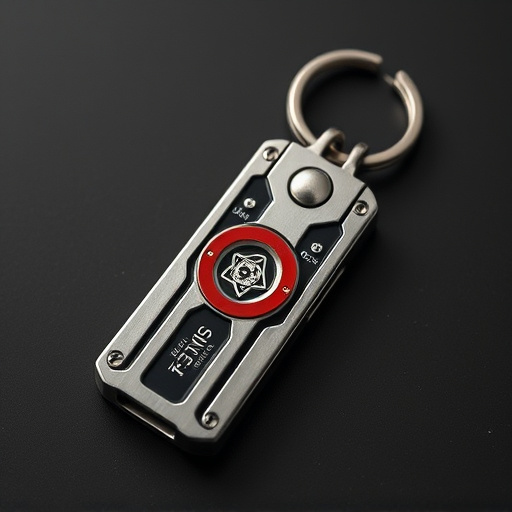Understanding state laws regarding concealed weapons is essential before purchasing a hidden self-defense keychain, as regulations vary widely across the U.S. These keychains must balance discretion and robustness, with materials like steel or aluminum ensuring strength while maintaining a low profile for easy portability. "Hidden Self Defense Keychain Designs" offer peace of mind by providing discreet protection in emergencies, but users must research local laws regarding keychain pepper spray, capacity limits, storage, age restrictions, handling, and disposal to ensure legal compliance and personal safety.
“Uncover the power of protection with a hidden self-defense keychain—a discreet yet powerful tool. This comprehensive guide navigates the legal requirements for these innovative devices, exploring state-specific regulations that dictate their use. Learn how to balance functionality and discretion in keychain design while ensuring safety and compliance. Discover the intricacies of self-defense keychains, from understanding legal frameworks to implementing effective safety measures, empowering you to make informed choices.”
- Understanding Legal Frameworks: Exploring State-Specific Regulations
- Keychain Design Considerations: Balancing Functionality and Discretion
- Ensuring Safety and Compliance: A Comprehensive Guide for Users
Understanding Legal Frameworks: Exploring State-Specific Regulations
When considering carrying a hidden self-defense keychain, understanding your state’s legal frameworks is paramount. Each U.S. state has its own set of regulations regarding concealed weapons, including keychains designed for self-defense. These laws can vary widely, affecting everything from what types of devices are permitted to where and how they can be carried. For instance, some states explicitly allow certain types of hidden self-defense keychains as long as they meet specific criteria, such as having a limited range or non-lethal force. Others might have more stringent requirements, including permit systems or restrictions based on size, weight, and active ingredients (for pepper spray keychains).
Exploring these state-specific regulations is crucial for ensuring compliance and personal safety. Hidden Self Defense Keychain Designs offer innovative solutions for individuals seeking to enhance their personal security discreetly. However, it’s essential to research and understand the legal implications in your state before carrying such a device. This proactive approach allows you to enjoy the benefits of a compact, easily accessible self-defense tool while avoiding potential legal consequences.
Keychain Design Considerations: Balancing Functionality and Discretion
When designing a hidden self-defense keychain, the primary focus is on functionality and discretion. These keychains are meant to be easily portable and nearly invisible, yet quickly accessible in an emergency. Crafting such a device requires a delicate balance—it must be subtle enough to avoid attracting unwanted attention but robust enough to serve its protective purpose.
Considerations include material choices for both the keychain itself and the concealed defense mechanism. Materials like steel or aluminum offer strength and durability while remaining discreet. The design should also account for ease of use, ensuring that the self-defense feature can be deployed quickly and efficiently without drawing attention. Hidden Self Defense Keychain Designs prioritize functionality without sacrificing a sleek, unassuming appearance.
Ensuring Safety and Compliance: A Comprehensive Guide for Users
In today’s world, personal safety is a top priority for many individuals, leading to an increased interest in hidden self-defense keychain designs. These compact tools offer a sense of security and peace of mind, especially when navigating unfamiliar places or potential hazard zones. However, it’s crucial to understand the legal requirements surrounding these devices to ensure both their effectiveness and compliance with local regulations.
When considering a self-defense keychain, users should carefully research the specific laws in their state or region. Keychain pepper spray, for instance, is a popular option but may be subject to restrictions on capacity, storage, and distribution. Some states have explicit rules about carrying such devices, including age limitations and requirements for proper handling and disposal. Understanding these legal parameters guarantees not only personal safety but also avoids potential legal consequences.
In navigating the legal requirements surrounding self-defense keychains, understanding state-specific regulations is paramount. By considering the design aspects that balance functionality and discretion, users can ensure their safety while adhering to the law. The comprehensive guide provided offers insights into managing potential risks, making it easier for individuals to choose and utilize hidden self-defense keychain designs effectively and responsibly.
